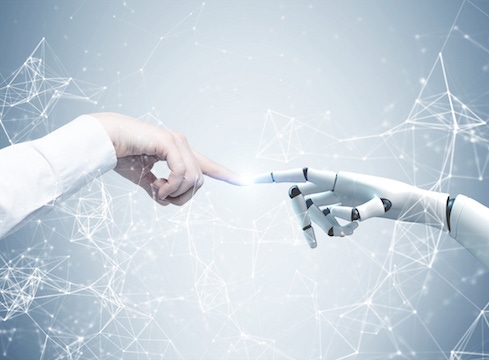How To Get Workers On Board With AIHow To Get Workers On Board With AI
Most workers want AI to help them get their jobs done. But attitudes toward how they experience AI in their lives, where they prefer to find it and who they trust to sell them its value vary across generations.

If you ask business leaders whether their workers want to use artificial intelligence, most will assume the answer is “no.” They presume workers see AI as invasive, or too complicated, or as putting their jobs at risk. Yet contrary to this popular belief, people who are employed are generally positive about AI. They believe it can help them avoid mistakes and solve problems, and they generally think it can make the world a better place.
That’s the most important aspect of the story from Gartner’s 2022 AI Consumer survey.
Don’t get me wrong: There’s a strong undercurrent of concern in the US workforce about AI. A significant percentage of workers -- especially those who don’t trust their employers -- prefer not to use AI in their jobs, prefer to limit their interactions with it in their consumer lives, and are concerned that it will not benefit society.
But what’s most striking is how workers in general are quite positive about AI’s potential in their professional lives.
Workers Want AI to Help – Not Take Over
Here’s the key. Executives who invest in AI for their workers’ and customers’ benefit must be ready for the fact that most want AI to offer assistance, but not always take over the tasks that define their work and consumer lives. In fact, in each of nine categories of work tasks, more workers -- at least half -- wanted AI to help than wanted AI to do everything or do nothing.
In the most significant case, we saw 58% of workers say they wanted AI to help them with mistake reduction. Comparatively, about 28% say they wanted AI to remedy all mistakes, and 14% wanted AI to help with none of it.
From your text feed resembling Candy Crush to your lunch run turning into Grand Theft Auto, people face a lot of games (metaphorically speaking) every day. The truth is that most workers’ days are less digitally complex.
So, tic tac toe might be a better example.
For a lot of workers, the worst part of the day is the thousand little games of tic tac toe they play -- the compliance-oriented forms that have to be filled out, the swivel-chair integration that demands they take data from a spreadsheet and put it in a green-screen system, the replacement of key text in an email before resending it to a new address and hoping that they remembered to BCC the right address in the antiquated project management app.
No one wants to lose one of these zillion games of tic tac toe. These niggling little tasks are all too easy to botch because of how tedious they are. That’s why they want AI to step in to play, or at least to kibbitz.
Position AI in a Supporting Role – Not the Star
But, to get workers to actually commit to this, executives have to understand that these workers have real concerns about AI.
The older they are, the more likely they are to worry that they will lose the precious human connection that can make even the most tedious game of tic tac toe fun and fulfilling. For example, baby boomers are more likely than younger people to say that’s a reason they wouldn’t use AI at work.
And the younger they are, the more likely they are to worry that they’ll get laid off if they use AI
-- that once the boss realizes the computer plays better, faster tic tac toe than an entry level worker, the entry level worker won’t be worth anything anymore. Millennials were significantly more likely to say that this was a reason they would avoid using AI at work.
And no matter what age they are, workers worry especially about AI’s impact on security and privacy. We found that about half of workers felt that risks to those factors were the top two reasons they might avoid using AI professionally.
Where leaders in IT and data and analytics -- even executives at the C-level -- can make the biggest difference is by sending the message that AI is a good way for the org to play a ton of tic tac toe. But they also need to get across that learning tic tac toe is how we develop our understanding of more sophisticated games. That working in entry level positions trains people to be more effective workers with greater sophistication. That any game is valuable for providing fellowship, understanding, and comprehension of subtlety.
Enterprise leaders should:
Communicate directly how AI will affect employees’ and customers’ privacy. Enumerate, dispel myths, tell the truth.
Mandate that AI features primarily aid workers through assisting their decisions instead of eliminating them -- especially the delicate decisions that demand common sense and care.
Preserve popular aspects of work that bring co-workers, customers, constituents or other stakeholders together in live and even in-person interactions.
Because AI can play the lonely and incessant flow of tic tac toe challenges, workers can focus on the harder games -- checkers, chess, even bridge. And while it might seem difficult to get that message across to a diverse and various workforce, it’s the key thing for executives to accomplish.
After all, they can’t expect AI to do it.
About the Author
You May Also Like






